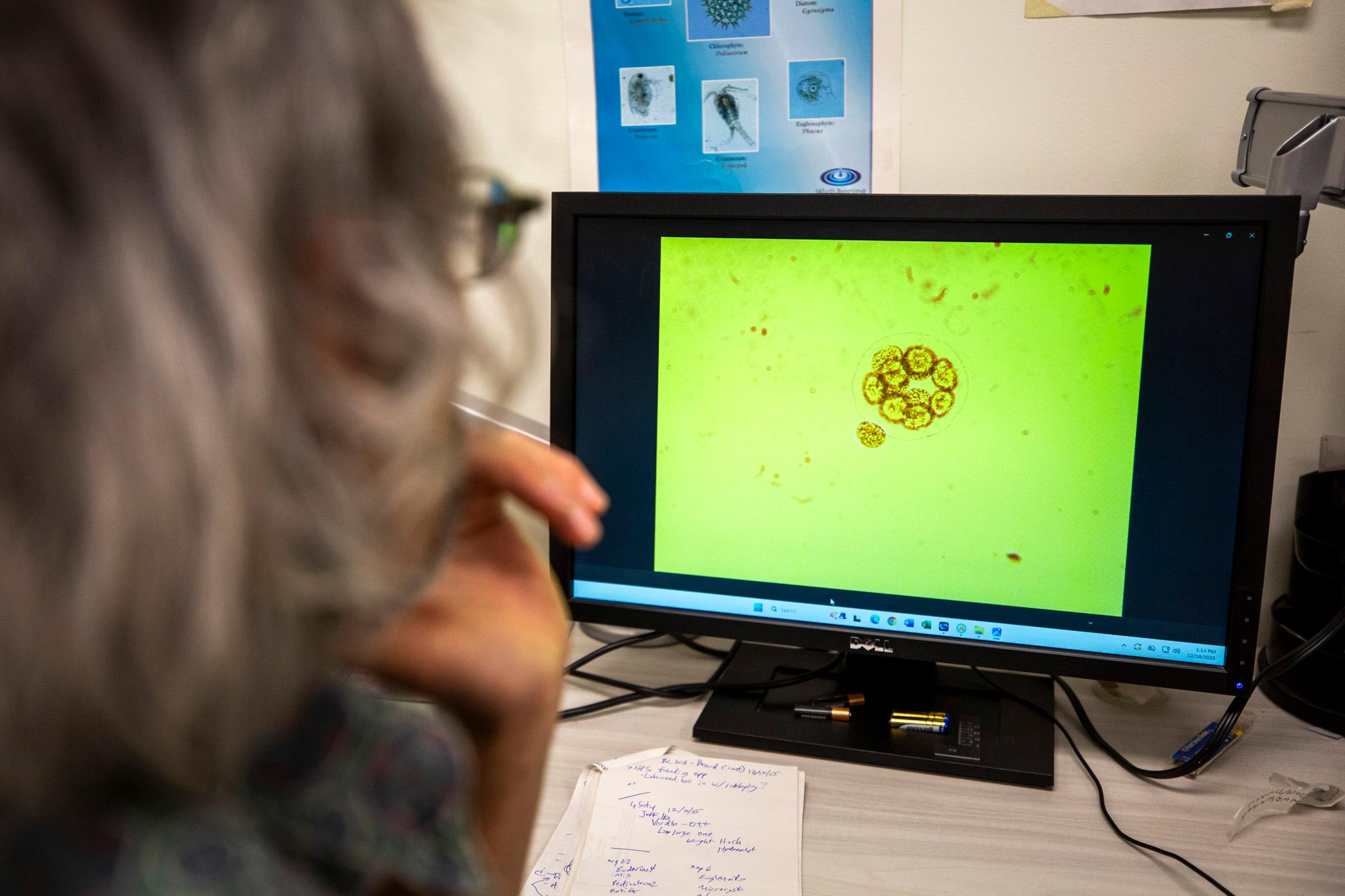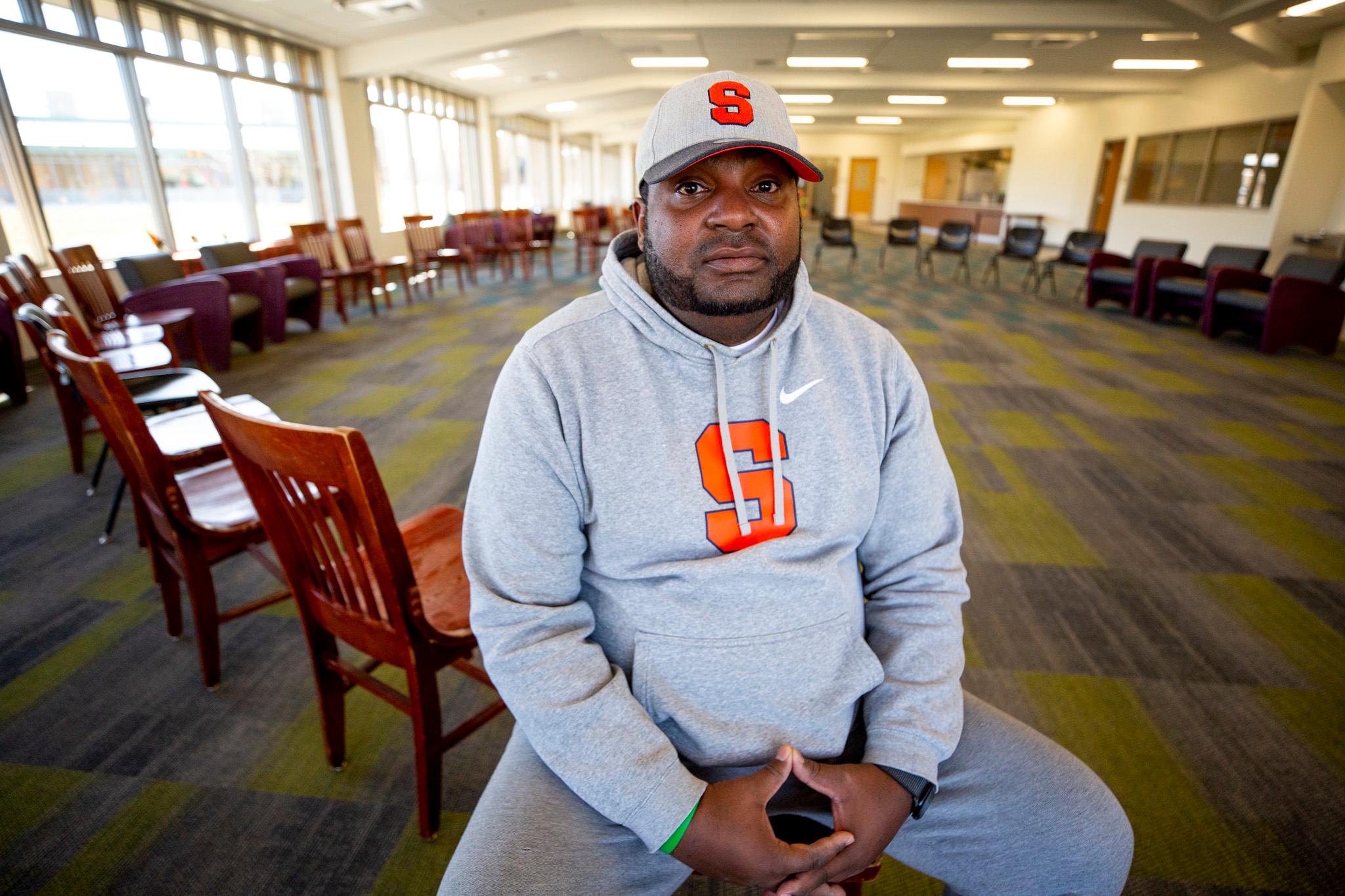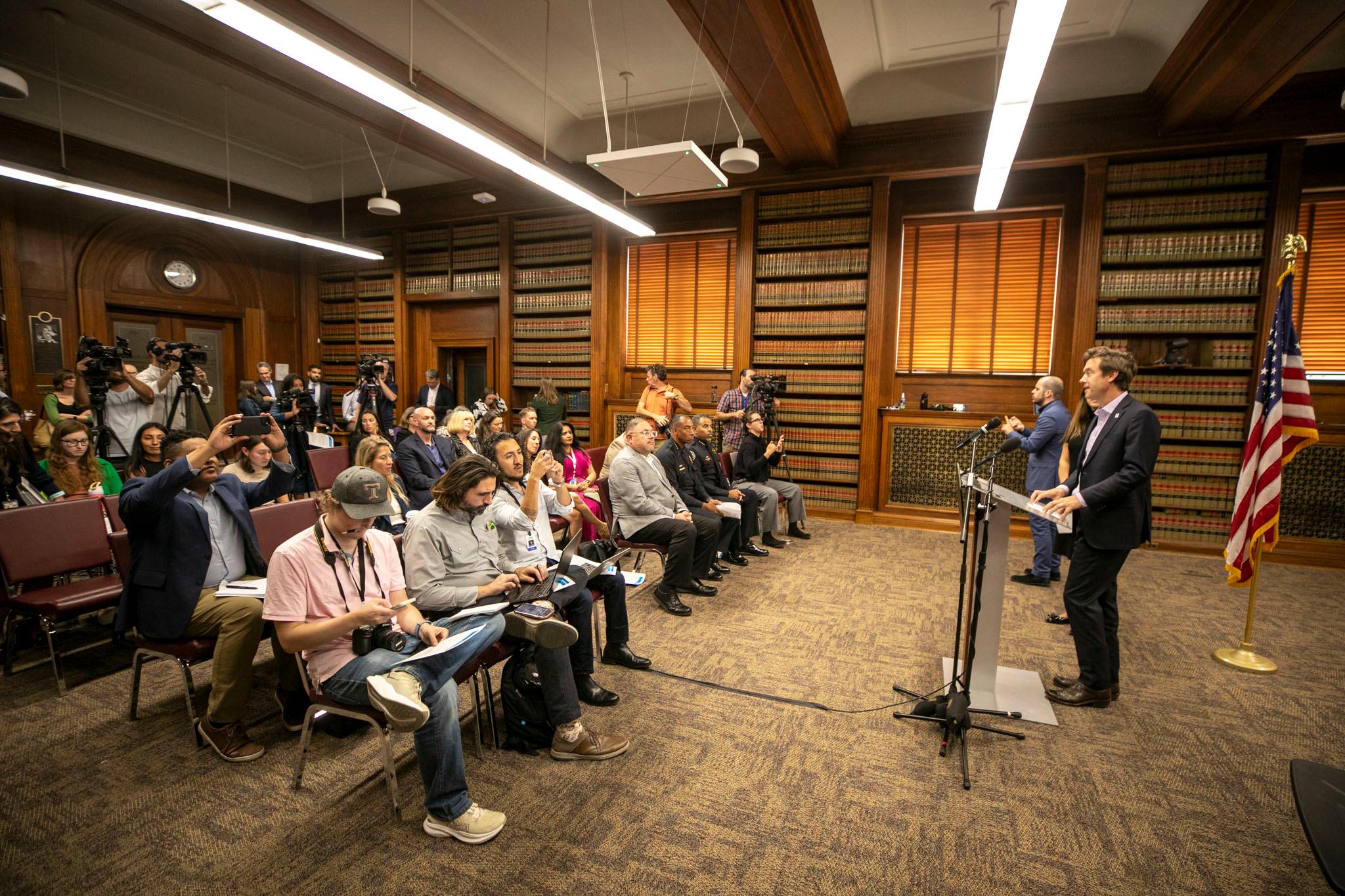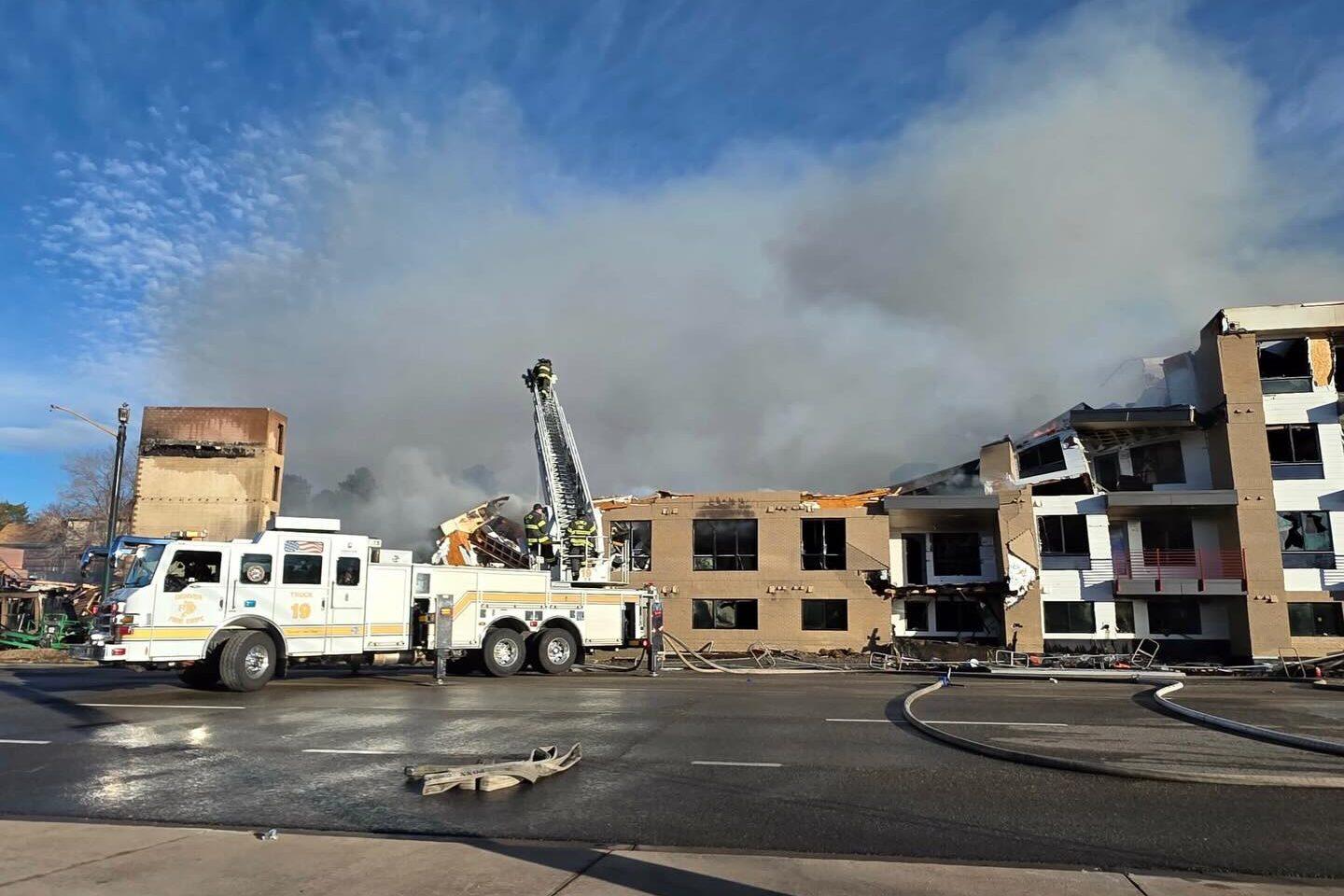After more than a year and a half workshopping their "force related policies" with community stakeholders, the Denver Police Chief Paul Pazen unveiled his department's final document on Monday.
The 27-page document outlines proper use of weapons, scenarios in which officers should use them and how incidents should be reported after the fact.
In 2016, when then-Chief Robert White announced the new policy would be penned, community groups made it clear they wanted a seat at the table as the document came together. In January 2017, White announced they'd have their shot. In the months since, a small group of civilian representatives have sat through meeting after meeting, providing input and fighting for changes as small as a single word to make sure the document represents community interests now and holds officers accountable in the future.
Pazen said the entire force should be trained in the new standards by the end of the year. In 2019, more intensive training will take place for all officers. That next stage will include an emphasis on hands-on learning with a virtual reality simulator that the department rolled out in 2016; that system will include custom-made scenarios derived from situations brought up by the community group.

Pazen talked about seven recommendations that arose from community representatives.
- Recommendation: DPD's "Decision Making Model," which is used in determining what force will be used, should use "declaratory statements in place of questions for the definition of 'reasonable and necessary.'"
Response: Officers "must ensure that any force they use is reasonable and necessary under the totality of the circumstances."
Basically, DPD says these are complicated situations and cannot issue literal guidelines for every scenario. - Recommendation: The word "type" when describing force should be replaced with "degree," to emphasize how force is applied and not just in what way.
Response: DPD compromised and used the word "amount." The policy reads: "When needed, officers must use only the amount of force reasonable and necessary under the totality of of circumstances."
More on why this matters below. - Recommendation: Nonlethal force should not be used against people who are only verbally confrontational to police.
Response: "Officers should not interfere with the rights of individuals to exercise their First Amendment rights if they have not violated a law."
Discussion on this topic touched on an incident in which Colorado Independent Editor Susan Greene was handcuffed while a man was being detained. Chief Pazen called it the "elephant in the room," and said the department is taking "additional training steps" to ensure a situation like that will not occur again.
"No officer should be utilizing force whatsoever when someone is exercising their First Amendment rights," Pazen said. - Recommendation: DPD's Internal Affairs Division should "investigate certain types of force."
Response: "The DPD does not utilize a tiered approach to force.""Every use of force report that occurs … except officer-involved shooting," Pazen said, will be "reviewed by trained officers." Cases of officer-involved shootings have a separate protocol for investigation.
-
Recommendation: The use of multiple tasers should be prohibited against a single person.
Response: "Officers must articulate the need for multiple and repeated CEW/TASER use as necessary and reasonable. An initial use may not be effective to take an individual into custody." -
Recommendation: Ripp™ leg restraints should not be attached to arrestee's handcuffs.
Response: This recommendation was added to the policy with DPD input. - Recommendation: Officers involved in a shooting should not be allowed to review body camera footage immediately after an incident.
Response: This recommendation was added to the policy with DPD input.
Roshan Bliss, a member of the Denver Justice Project, expressed concern that the language did not include an "until" clause that would stipulate when an officer might be allowed to review the footage. DPD Division Chief of Administration Ron Saunier said that this is tricky, and is related to the department's practice of asking officers to give voluntarily statements when they're ready after an incident has occurred. Sometimes, especially if an officer is represented by a lawyer in a criminal proceeding, that interview might not take place without a review of the footage.
For community representatives, words matter.
A lot of the discussion in this meeting surrounded the use of single words, like "degree" rather than "type," when it comes to use of force.
Lisa Calderón, a community advocate who has long worked on criminal justice reform, said these small changes will have lasting ripples into the future.
"I can handcuff you, it’s a type of force, but how I handcuff you is the difference," she said. "It gives us the substance of what an officer did, versus just a description."
While this may or may not get through to officers as they're trained in the new standards, she hopes this kind of articulation will affect how officer might be disciplined.
"How hard you did something, how rough you did something will matter," she said, "rather than: you did something that was allowed under the policy. It’s not just what you did but how you did it."
While she remains vigilant against police brutality, Calderón said she's happy that they came to a "compromise."
Rev. Tammy Garrett-Williams, who has represented the NAACP since this process began, said she also fought to have the words "civil rights" included in the document.
She thinks that will satisfy a lot of concerned people that she represents.
"It was never there," she said. "Because we got that language in there, we’re OK for right now."

DPD plans to overhaul their virtual reality training to address specific scenarios.
"This is where a lot of the magic is going to happen," Chief Pazen said.
This is part of an effort to work around "adult-based learning tactics" that will bring officers away from dull slideshow presentations and employ more active teaching strategies. Some of this will be in a classroom setting, but officers will also be exposed to tough situations in their VirTra V-300 simulator at Denver's police academy.
Pazen said this kind of training will allow officers to reckon with "grey areas" that the policy can't directly address, to "make sure they understand the intent" of the document beyond what's literally written.
Community advocates were invited to watch some of this training when their oversight process began.
Garrett-Williams was one, who said a scenario where a white man was threatening to throw a baby over a bridge was "traumatizing."
"I could only imagine what that scenario would have possibly been if that had been a black person," she said.
And more so, she's concerned that this type of training won't change behavior when it comes down to a real situation.
"What you’re training on in that room doesn’t necessarily mean that’s going to be happening in the field," she said. "There’s still people that have biases. There’s still hidden supremacy in the police department."

Calderón said the system "didn’t capture our concerns about racial profiling," that the current scenarios focus on life or death situations and is blind to "daily indignities" that might occur in a less serious moment. It's not going to be just new training tactics that make a difference. Those efforts need to be in concert with smart policy changes.
If the tricky scenarios Pazen hopes to simulate are impacted by training when it comes to a real situation, Calderón hopes there will be better documentation to show change is actually taking place. She hopes the small, very literal tweaks in language that the group has proposed will lead to that kind of tracking.












